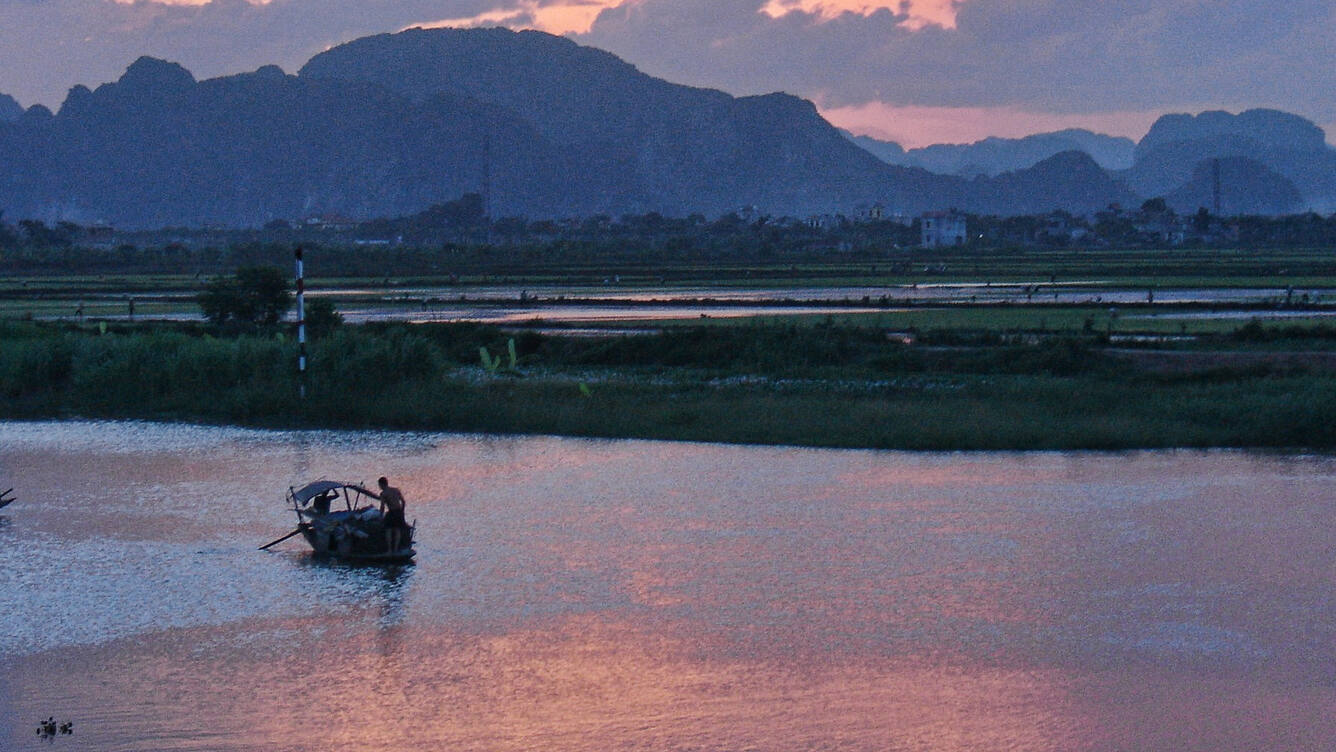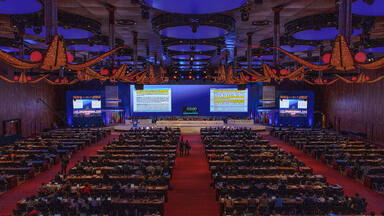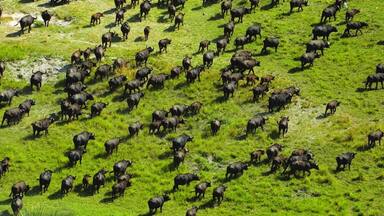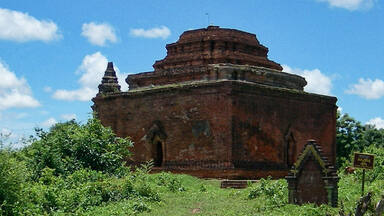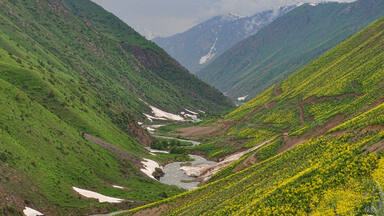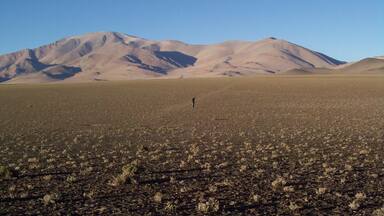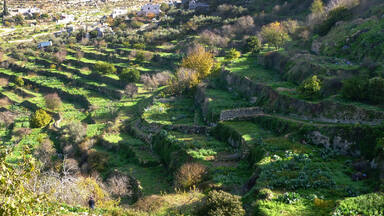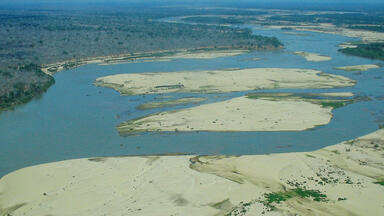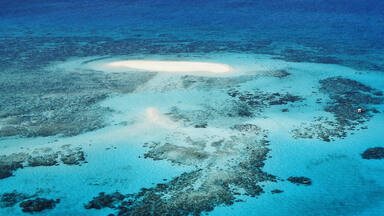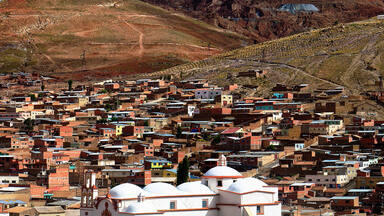Six new sites inscribed on World Heritage List
Doha, 23 June – The World Heritage Committee this morning inscribed properties in the Russian Federation, Costa Rica, Viet Nam, India, Philippines and Denmark on the World Heritage List. It also approved the extensions of a site in China and two transboundary sites in Poland and Belarus, and Denmark and Germany.
The sites discussed include two cultural sites, a mixed natural and cultural property, and six natural sites. They are:
Bolgar Historical and Archaeological Complex (Russian Federation). This property lies on the shores of the Volga River, south of its confluence with the River Kama, and south of the capital of Tatarstan, Kazan. It contains evidence of the medieval city of Bolgar, an early settlement of the civilization of Volga-Bolgars, which existed between the 7th and the 15th centuries, and was the first capital of the Golden Horde in the 13th century. Bolgar represents the historical cultural exchanges and transformations of Eurasia over several centuries that played a pivotal role in the formation of civilizations, customs and cultural traditions. The property provides remarkable evidence of historic continuity and cultural diversity. It is a symbolic reminder of the acceptance of Islam by the Volga-Bolgars in 922 AD and remains a sacred, pilgrimage destination to the Tatar Muslims.
Precolumbian Chiefdom Settlements with Stone Spheres of the Diquis (Costa Rica) includes four archaeological sites located in the Diquis Delta in southern Costa Rica, which are considered unique examples of the complex social, economic and political systems of the period between 500-1500 AD. They contain artificial mounds, paved areas, burial sites and, most significantly, a collection of stone spheres, between 0.7m and 2.57m in diameter, whose meaning, use and production remain largely a mystery. The spheres are distinctive for their perfection, their number, size and density, and their placement in their original locations. Their preservation from the looting that befell the vast majority of archeological sites in Costa Rica has been attributed to the thick layers of sediment that kept them buried for centuries.
Trang An Scenic Landscape Complex (Viet Nam) is inscribed as a mixed natural and cultural property. Situated on the southern shore of the Red River delta, Trang An is a spectacular landscape of limestone karst peaks permeated with valleys, some of which are submerged, and surrounded by steep, almost vertical cliffs. Exploration of some of the highest altitude caves that are dotted across the landscape has revealed archaeological traces of human activity dating back almost 30 000 years. They illustrate the occupation of these mountains by hunter-gatherers and how they adapted to climatic and environmental changes. The property also includes Hoa Lu, the old capital of Viet Nam in the 10th and 11th centuries, as well as temples, pagodas, paddy-field landscapes, with villages and sacred sites.
Great Himalayan National Park (India) (GHNPCA) is located in the western part of the Himalayan Mountains in the northern Indian State of Himachal Pradesh and is characterized by high alpine peaks, alpine meadows and riverine forests. The 90,540 ha property includes the upper mountain glacial and snow melt water source origins of several rivers, and the catchments of water supplies that are vital to millions of downstream users. The GHNPCA protects the monsoon-affected forests and alpine meadows of the Himalayan front ranges. It is part of the Himalaya biodiversity hotspot and includes 25 forest types along with a rich assemblage of fauna species, several of which are threatened. This gives the site outstanding significance for biodiversity conservation.
Mount Hamiguitan Range Wildlife Sanctuary (Philippines). Forming a north-south running mountain ridge along the Pujada Peninsula in the southeastern part of the Eastern Mindanao Biodiversity Corridor, the Mount Hamiguitan Range Wildlife Sanctuary has an elevation range of 75-1,637 m above sea level, and provides critical habitat for a range of plant and animal species. The property showcases terrestrial and aquatic habitats at different elevations, and includes threatened and endemic flora and fauna species, eight of which are found only at Mount Hamiguitan. These include critically endangered trees, plants and the iconic Philippine Eagle and Philippine Cockatoo.
Stevns Klint (Denmark). This geological site comprises a 15 km-long fossil-rich coastal cliff, offering exceptional evidence of the impact of the Chicxulub meteorite that crashed into the planet at the end of the Cretaceous, about 65 millions years ago. Researchers think that this caused the most remarkable mass extinction ever, responsible for the disappearance of over 50% of all life on Earth. The site harbours a record of the cloud of ash formed by the impact of the meteorite – the exact site of the impact being at the bottom of the ocean off the coast of Mexico’s Yucatán peninsula. An exceptional fossil record is visible at the site, showing the complete succession of fauna and micro-fauna charting the recovery after the mass extinction.
South China Karst (China). This is an extension of the South China Karst site. The property was inscribed on the World Heritage List in 2007 and is one of the world’s most spectacular examples of humid tropical to subtropical karst landscapes. The extension covers an area of almost 50 000 hectares. This serial site now includes 12 elements spread over the provinces of Guizhou, Guangxi, Yunnan and Chongqing and covering 176 228 hectares. It contains the most significant types of karst landforms, including tower karst, pinnacle karst and cone karst formations, along with other spectacular characteristics such as natural bridges, gorges and large cave systems.
Bialowieża Forest (Belarus/Poland). This is an extension of and new proposal for the Belovezhskaya Pushcha / Białowieża transboudary site on the border between Poland and Belarus, inscribed on the World Heritage List in 1979. Situated on the watershed of the Baltic Sea and Black Sea, this immense range of primary forest includes both conifers and broadleaved trees. The modification to the property translates as a reduction of over 5000 hectares on the Belarus side and a vast extension of the Polish section, from 5069 to 59,576 hectares. Covering a total area of 141,885 hectares, this transboundary property is exceptional for the opportunities it offers for biodiversity conservation. It is home to the largest population of the property’s iconic species, the European bison.
The Wadden Sea (Germany/Denmark). This is an extension of the Dutch and German Wadden Sea site, inscribed on the World Heritage List in 2009. The Wadden Sea is the largest unbroken system of intertidal sand and mud flats in the world. The complete extension now covers most of the Danish Wadden Sea maritime conservation area, as well as a maritime extension of the Dutch Wadden Sea Conservation Area and the German Wadden Sea National Parks of Lower Saxony and Schleswig-Holstein.
This morning’s inscriptions bring the total number of sites on the World Heritage List to 1007.
The 38th session of the World Heritage Committee, chaired by Sheikha Al Mayassa Bint Hamad Bin Khalifa Al Thani, began on 15 June and will continue through to 25 June.
Documents
UNESCO Media Contact in Doha
Sue Williams,
+33(0)6 15 92 93 62 or +974 503 16609
s.williams@unesco.org
Follow @UNESCO on Twitter using the hashtag #WorldHeritage
Follow us on Facebook
